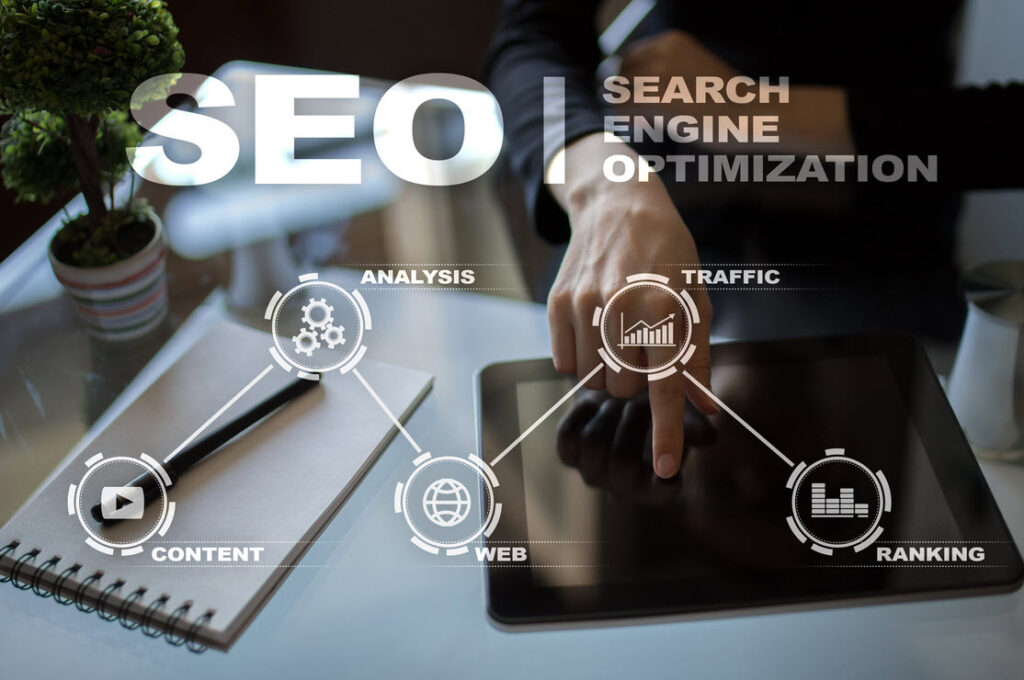
The brick-and-mortar store is slowly being replaced by websites. You could even say that business websites are displacing some staff and departments in traditional workplaces, since they double as sales representatives as well. However, your website’s effectiveness may depend on the competition of other websites within the same industry or targeting the same demographic.
Search engine optimization (SEO) is what allows your website to compete fairly in the digital world. To optimize your digital marketing plan for SEO, you must consider these three factors: competition, content, and web design. In web design specifically, it’s all about the web pages on your site and their structure, content, and interactivity.
A good web design is one that you build to be both user- and search engine-friendly. Your web design will determine your site’s search engine ranking and the amount of web traffic you attract. For this reason, you need a dynamic approach for improving your digital presence. You’ll need to continuously review your web design and SEO strategy.
This article looks at eight ways your web design can help with your SEO strategy.
- Improves Customer Experience
One of the goals of SEO is to improve user experience. If you look at most of the elements that lead to improved ranking on search engines, you’ll see that they’re related to user experience. These elements include speed, responsiveness, accessibility, ease of navigation, and many others. The importance of a positive user experience in ensuring loyalty and attracting repeat visitors to a website cannot be overstated.
A good user experience is one where it’s simple to find information and pages on the site. Your ranking will improve if search engines see visitors spending more time on your website or clicking on more pages.
If you want to capture all the elements that create a good user experience, look for reputable web designers. You can go to sites such as www.connectivewebdesign.com and many others for professional web design services.
- Attracts The Search Spiders’ Attention
To align with search engine needs, SEO looks outward. For example, your SEO strategy should take into account the ranking algorithms that are currently in use. Keep in mind that search engines update their algorithms regularly. Therefore, your strategy shouldn’t stay static. Your website’s ranking will only improve if search engine crawlers view your web design and content favorably.
- Generates Organic Search Traffic
You can achieve a higher ranking on search engines when you create excellent content for your website while also considering your competitors’ techniques. This, in turn, boosts your chances of making sales. A high ranking is a great way to get organic visitors to your site. This is the traffic that comes from search engines.
But how can you improve your website’s organic traffic for better SEO? Primarily, it has to do with creating relevant, persona-targeted content based on your market niche and consistently producing high-quality content.
- Brings In Valuable Traffic
While generating organic traffic is excellent, you must ensure that you are also attracting potential clients. Having an SEO-friendly website can help you achieve that. With an SEO-friendly web design, there are various approaches to gaining valuable web visitors. Using long-tail keywords in your content is just one way.
With these keywords that are tailored more to the business’s service or product, you can get a lot of results. They have a low level of competitiveness and low search volume. In comparison to other keyword classes, they are longer (more than three syllables). These keywords are more specific, resulting in higher-quality traffic to your website.
Another benefit of an SEO-friendly design is that it incorporates a responsive design into your website, which helps you gain significant visitors. A responsive design allows your website to adjust to whichever device the user is using at the time of the search. This can be a smartphone, tablet, or desktop.
Users will have a better experience on your website when they can access it on their convenient devices. Visitors can then spend more time on your site because it is tailored to their displays. As a result, search engines receive a good signal, and your site’s search ranking rises. But above all, your site has a better chance of receiving more valuable traffic.
- Improves Your Brand’s Reputation
According to one report, 89% of buyers read reviews before purchasing things. With so many people reading reviews before making a purchase, your website must make a good first and lasting impression on its visitors. When your site has a good name, it helps a great deal with your SEO strategy.
One distinguishing website feature that can help create a good impression is a visually appealing layout. A website with a good layout also features simple navigation that assists visitors in finding the information they require. It is designed with the target audience’s demands in mind.
The goal is to keep visitors interested and to encourage them to return. When visitors have a positive experience on your website, it only helps to boost your brand’s reputation in the marketplace.
- Builds Brand Credibility
You probably trust the websites that appear on the first pages of your search engine. Even other internet users may share the same sentiment. This is beneficial not only for brand awareness but also for brand credibility.
When you’re at the top of the list, it’s evidence enough that you’re the best in your industry. It indicates that your website has been designed to meet the needs of your visitors. A site that frequently appears at the top of the search results page will certainly earn exposure and a good reputation.
- Lowers Costs
Keep in mind that it costs you nothing to get a good ranking in search results, unlike paid advertising or other marketing tactics. The listings on search engines are both free and simple to obtain. That means a website that features design elements that help improve SEO saves you a considerable amount of money.
For better understanding, consider the following scenario: When an ad’s funding is cut off, the ad is taken down from the internet. Consequently, online traffic for that specific website drops. If you’re familiar with pay-per-click advertising, you’re aware that marketers only pay when a user clicks on an ad and visits their website.
While this may offer a distinct advantage over traditional ads, such as print and television, every visitor still has costs. Customers will stop showing up the moment an advertiser’s campaign is paused. On the other hand, sites that appear in the organic results don’t have to pay a dime for their placement.
You may have spent a significant amount of time and money producing the pages that are now ranking high on search engines. They are on page one because the search engine’s algorithm believes they are valuable to users. When your site’s good SEO enables your ranking, you can maintain your online traffic and search engine ranking without spending money.
- Improves User Engagement
One of the main goals of digital marketing, including SEO, is to build engagement with your customers. Improved user engagement leads to increased brand awareness or increased revenue. As a result, it’s critical to develop an SEO strategy that allows you to reach more people.
You also need to find a way to keep visitors on your site longer and encourage them to share your site’s content. This is how your web design plays a role in improving user engagement. When you have something that your users need and it’s well-presented and accessible, you can easily fulfill your user engagement goals.
Remember that as you engage more, your rankings will improve, and you will be able to move closer to your desired outcome.
Tips For Building An SEO-Friendly Web Design
Making a website SEO-friendly is a fairly straightforward process. You do it so that search engines can crawl each web page, analyze the information properly, and finally index it in their database. Following that, they give their users the most useful and important web pages based on the topics they’re searching for.
Here are simple tips to improve web design to help with SEO strategy.
- Pay attention to URLs: To make your website SEO-friendly, your webpage URL must follow the best SEO principles regarding search engine crawling. In addition, it should possess a clear structure. Make sure that permanent links are self-explanatory.
- Fast loading pages: A website that loads a bit too slow creates a poor impression on visitors and search engines alike. Ensure that your website pages load fast to encourage more user engagement and lower bounce rates.
- Get the website structure right: A good structure makes it easier for web crawlers to index web pages and content.
- Create unique content: The content you create for your website must be original, accurate, and useful to visitors. Search engines are aware of websites that contain plagiarized content and identify them as such. Plagiarized and low-quality content undermines your SEO strategy.
Takeaway
Web design can help your SEO strategy in the ways discussed above, among many others. Ensure that you have a website that can support your SEO strategy by following web design best practices. These practices include unique content, clean structure and URL, fast loading pages, responsiveness, and many more. These are some of the things that can help with your brand awareness, visibility, and recognition.
You may also like:- WallStreet Pepe: The Future of Meme-Driven DeFi with $WEPE Token
- Get Stunning Nails with Gel Nail Stickers from Lehmani
- A Complete Guide to Affordable Printing for Everyday Needs
- Benefits of Setting Up Identity Verification for Web and Mobile
- Crypto Coins That Wall Street Experts Predict 25,000% Gains by 2025!
- Unleashing the Flexibility of Windows VPS Hosting
- Platform Ladders in Warehouse Automation: Integration, Benefits, and ROI Analysis
- How Green Loans Are Revolutionizing Financing for Sustainable Tech Solution
- How Annuity Plans Can Secure Your Retirement Goals
- Why Proxies Are Vital for Privacy, Security, and Accessibility









